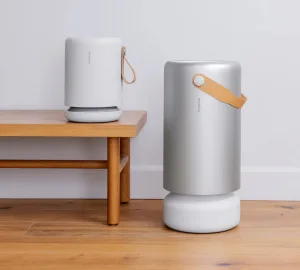5 minute read
In today’s dynamic restaurant business, the integration of Internet of Things (IoT) technologies is transforming how establishments manage their operational procedures, including the very furniture that customers use. IoT, a network of interconnected devices that interact and share data, is no longer just for smart homes or industrial applications; it’s also making considerable progress in improving productivity and customer experience at dining establishments.
IoT, previously a jargon exclusive to technology circles, has found practical applications in a variety of businesses, including restaurants. At its foundation, IoT is about embedding sensors and connections into common things in order to collect and exchange data. In restaurant settings, this entails transforming everyday furniture like as tables, chairs, and booths into smart, proactive assets that contribute to smooth operations and higher customer satisfaction.
Restaurant operational efficiency is critical for providing great service and optimizing resource use. Historically, managing restaurant furniture entailed regular inspections and reactive upkeep. However, with IoT connection, restaurant owners and managers have real-time visibility into furniture consumption patterns, allowing for preventative repair and efficient seating arrangements. This not only decreases downtime but also improves overall workflow, allowing employees to focus on providing outstanding dining experiences.
Benefits of IoT Integration in Restaurant Furniture
Enhanced Operational Efficiency
Real-time monitoring of furniture utilization enables managers to track which tables and chairs are in use, adjusting seating arrangements for maximum occupancy. Predictive maintenance plans based on consumption patterns prevent unexpected breakdowns, resulting in a smoother eating experience for consumers and fewer service disruptions. Sophisticated seating management systems can assist cut wait times by efficiently managing the backlog and sending guests smartphone alerts when their table is ready.
Improved Customer Experience
Consider a dining experience in which the temperature of your seating area adjusts automatically for your comfort, or where your preferred settings are remembered and applied as soon as you sit down. IoT-enabled furniture enables this by providing configurable settings based on individual preferences. Also, these smart furniture pieces may effortlessly interface with digital menus and ordering systems, providing customers with greater ease and customization.
Cost Reduction and Resource Optimization
IoT not only improves operational efficiency but also reduces costs and optimizes resources. Smart sensors embedded in furniture promote energy efficiency by altering lighting and climate control based on occupancy and ambient conditions. This lowers utility expenses while helping to achieve environmental goals. Likewise, preventive maintenance and optimal seating arrangements help to reduce furniture replacement and repair expenses, making operations more cost-effective in the long term.
Key IoT Technologies Used in Restaurant Furniture
IoT furniture collects data on usage patterns and environmental variables using a variety of sensors, including motion and weight sensors. These sensors wirelessly transfer data to centralized systems, which analyze it to provide actionable insights. Integration with existing restaurant systems, such as POS and inventory management, improves data accuracy and operational efficiency.
The backbone of IoT integration is solid connectivity options such as Wi-Fi, Bluetooth, and Zigbee, which allow for seamless communication between devices and centralized management systems. Cloud-based solutions allow for scalability and remote management, resulting in the effective deployment and maintenance of IoT-enabled furniture across many restaurant locations. Edge computing accelerates data processing, reduces latency, and improves responsiveness.
Implementation Challenges and Considerations
As with any IoT deployment, restaurant owners prioritize data security and consumer privacy. Implementing encryption mechanisms and using secure data transmission practices can help reduce the risks connected with unauthorized access and cyber threats. Compliance with GDPR and other legal regulations ensures that client data is managed appropriately, building trust and confidence among customers.
Initial Costs and Return on Investment (ROI)
While the early costs of incorporating IoT in restaurant furniture may appear high, the long-term advantages surpass the investment. Detailed cost-benefit assessments help companies measure ROI by evaluating operational cost savings, revenue creation opportunities, and increased customer retention through improved service quality. Exploring finance options and financial incentives for IoT adoption might help to reduce upfront costs and speed return on investment.
Future Trends in IoT Integration for Restaurant Furniture
Future sensor technology advances will focus on downsizing and increased functionality, allowing for more discreet integration into furniture designs. Sensor fusion techniques will combine data from many sensors to provide full insights into customer behavior and operational efficiency, resulting in the continual development of restaurant management procedures.
The combination of AI and machine learning algorithms will transform the way eateries use IoT data. Predictive maintenance algorithms predict maintenance requirements before they happen, extending furniture life and decreasing downtime. AI-powered analytics will deliver meaningful insights into customer preferences and operational efficiencies, allowing for tailored dining experiences and improved workflow management.
Using IoT for Enhanced Operational Efficiency in Restaurant Furniture
Finally, IoT integration in restaurant furniture marks a paradigm change toward increasing operational efficiency, improving customer experiences, and maximizing resource use. Restaurants can significantly reduce costs, optimize operations, and provide personalized dining experiences that exceed consumer expectations by integrating sensor technologies, powerful connectivity solutions, and AI-driven analytics. As technology advances, incorporating IoT into restaurant management will not only generate long-term growth but also place establishments at the forefront of innovation in the competitive hospitality business.




